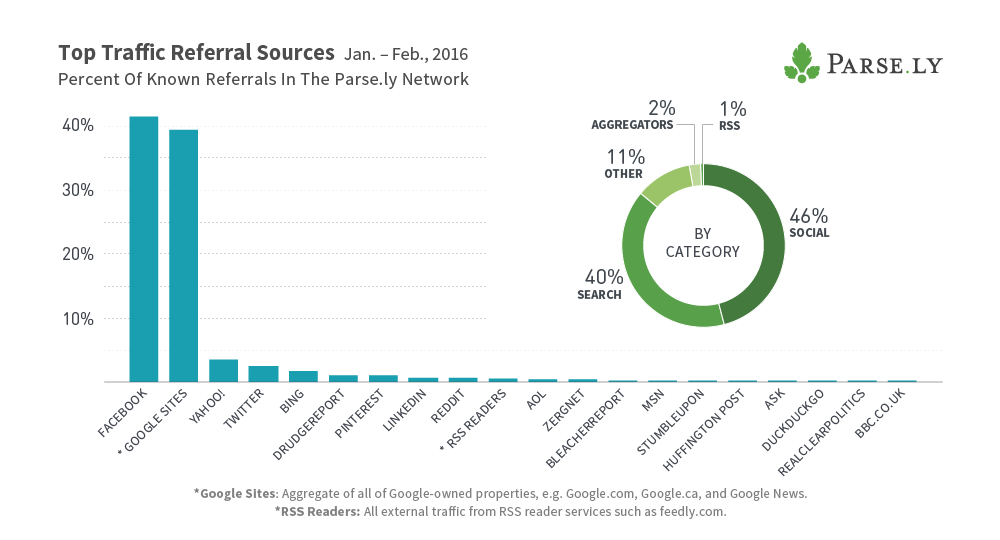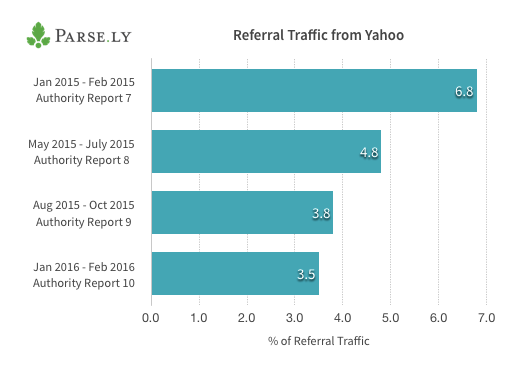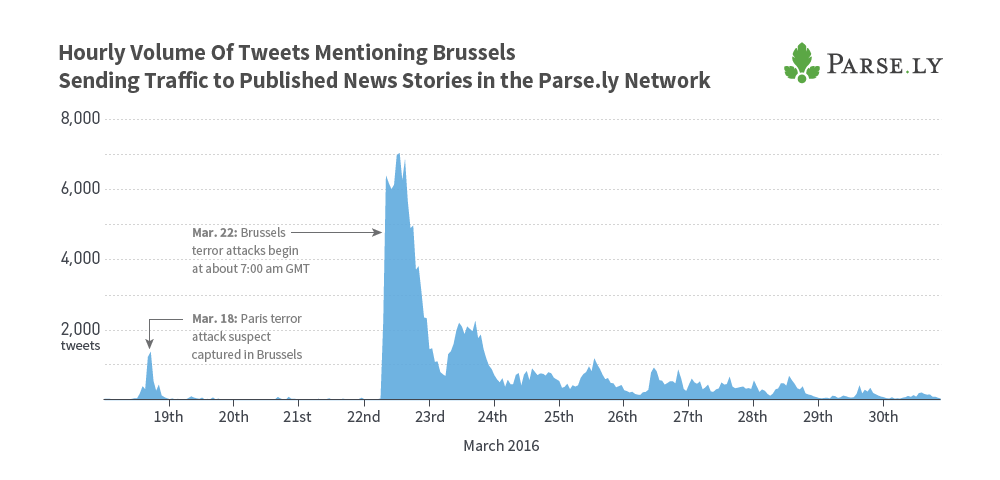Yahoo! Tops Twitter as a Traffic Referral Source for Digital Publishers
In each of our quarterly Authority Report​s, Parse.ly takes a look at the top known referral sources to our network of sites. ​We’ve found that referral sources show a snapshot of the traffic to our network and reflect both industry trends and shifts in our publishing clients.

As a result of this ongoing research, Parse.ly was the first to report on Facebook surpassing Google as a top referrer to news websites in the summer of 2015. And in our most recent Authority Report, we saw that Facebook is still driving a higher percentage of traffic to news sites (41.4 percent) than Google (39.5 percent).
But what about other top referral sites like Yahoo! and Twitter?
Although the percentage of traffic that Yahoo! and Twitter send to digital publishers is smaller, we can see some discernible trends.
Take a look at the amount of referral traffic Yahoo! has driven to Parse.ly’s network over the past year (the chart below is based on data from past Authority Reports). Traffic referred to news sites from Yahoo! has decreased by more than three percent in one year’s time.

Similar to Yahoo!’s steady decline in traffic referrals to news sites, Parse.ly’s most recent Authority Report finds that Twitter doesn’t make much of an impact (in terms of referrals) for publishers. In fact, a “typical” publisher only receives 1.5 percent of its traffic from Twitter. ​
A Closer Look: Breaking News vs. Conversational News
​Twitter has cultivated an army of “citizen journalists” who report on major news events before mainstream media outlets can even publish breaking news stories. Sometimes, these social media informants even serve as valuable sources for mainstream coverage. Interesting examples of this include the 2008 earthquake in China, the 2009 plane crash on the Hudson River, and more.
Immediately after a breaking news story has been published, Twitter is one of the most efficient ways to quickly (and widely) distribute it, as you can see from the chart below depicting the number of tweets sending traffic to published news stories after the recent Brussels attacks.

It is important to note that this data depicts a breaking news story. For more conversational tweets that link back to published news articles, distribution is not as explosive.
The topic of a piece of content matters a lot. The “sexier” the topic, the more socially active it will likely be on Twitter (meaning it will see high engagement and shares)​. Conversational tweets about computers fall relatively flat, while tweets about a wardrobe malfunction, for example, seem to be exponentially more shareable.
So what does this mean for content creators?
Both publishers and brands need to spend time ​learning more about their audience. Utilize data to understand what ​your audience might find interesting, and make sure that you are creating content that reflects this. Not only will this help you to improve the shareability of your content across social channels, but it may provide you with the insight you need to generate more traffic or encourage loyalty.
Interested in learning more? Download our most recent Authority Report, “Does Twitter Matter for News Sites?” here.